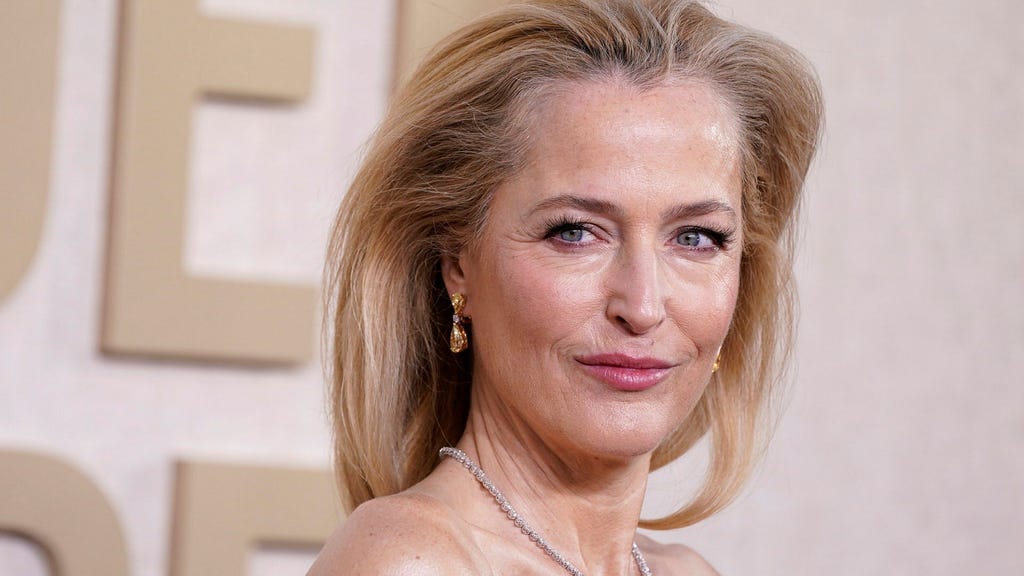Gillian Anderson’s ”Want: Sexual Fantasies by Anonymous” presents a diverse collection of 147 women’s sexual fantasies, challenging preconceived notions about female desire and offering a refreshing departure from the often-prescriptive narratives surrounding women’s sexuality. While the book’s promotional material and Anderson’s own introductions might suggest a continuation of the earnest, somewhat didactic discourse about female empowerment and sexual exploration, the actual content reveals a far more nuanced and surprisingly humorous landscape. Initially, the book appears to be another well-intentioned project promoting sexual liberation, with its emphasis on inclusivity and the explicit exclusion of certain themes like non-consensual acts and violence. This sanitized approach has drawn criticism, with some questioning whether the current climate of hyper-awareness surrounding consent and political correctness has inadvertently stifled genuine expression and exploration of sexuality.
Beyond the carefully curated framework, however, lie the raw, unfiltered fantasies of women from diverse backgrounds. While some entries adhere to predictable tropes, reminiscent of popular erotic fiction, many others venture into unexpected and often surreal territories. The sheer variety of desires expressed within the book’s pages defies easy categorization. From encounters with mythological creatures and fantastical beings to the blurring of boundaries between human and animal, the fantasies reveal a complex tapestry of longing, curiosity, and uninhibited imagination. One woman dreams of being enveloped by the tentacles of an unseen entity, while another envisions herself in the midst of a passionate encounter with horned and hoofed figures. A recurring theme is the transformation and transgression of physical form, as seen in the woman who fantasizes about a giant whose penis morphs into a living sex toy and another who desires to breastfeed a man. These unconventional scenarios challenge societal norms and expectations surrounding female sexuality, offering a glimpse into the hidden depths of desire that often remain unspoken.
The book’s strength lies in its willingness to embrace the bizarre and the unconventional. The fantasies are not always explicitly erotic; some are unsettling, others humorous, and many are simply peculiar. This departure from the expected, however, is precisely what makes ”Want” so compelling. It dismantles the notion of a singular, easily defined female sexuality and instead presents a kaleidoscope of individual experiences and desires. One particularly striking example is the woman who imagines herself as a ”hucow,” a breeding animal, embracing a role that subverts traditional notions of female agency and sexuality. This and other similarly unexpected fantasies underscore the book’s willingness to explore the full spectrum of human desire, even in its most uncomfortable or unconventional manifestations.
Contrary to the potentially tedious and predictable discourse surrounding female sexuality, ”Want” often surprises with its wit and irreverence. The women contributing to the anthology are not necessarily striving to make grand statements or dissect societal constructs; rather, they are indulging their imaginations and allowing their innermost desires to take shape without judgment. This playful approach to fantasy imbues the book with a sense of levity, making it an entertaining and thought-provoking read. While the overt focus on consent and the avoidance of potentially controversial themes might initially seem limiting, the sheer creativity and originality of the fantasies themselves transcend these constraints, offering a refreshing alternative to the often-serious discussions about female sexuality.
”Want” ultimately succeeds in presenting a more multifaceted and less sanitized view of female desire than often depicted in mainstream media. By providing a platform for anonymous voices, the book allows women to express their fantasies freely, without fear of judgment or social repercussions. This anonymity is crucial, as it fosters an environment of honesty and vulnerability, enabling the contributors to explore their desires without the constraints of societal expectations or personal inhibitions. The resulting collection is a testament to the richness and diversity of female sexuality, showcasing the wide range of fantasies that women harbor, from the conventional to the extraordinary.
While the framing of the book, with its emphasis on inclusivity and ethical considerations, might initially appear restrictive, the content itself transcends these limitations. The unexpected twists, the surreal imagery, and the sheer range of desires expressed within ”Want” create a compelling and often humorous exploration of female sexuality. The book challenges the reader to move beyond preconceived notions and embrace the complexities and contradictions inherent in human desire. It is a reminder that fantasy is a realm of infinite possibilities, a space where the boundaries of the self can be dissolved and the most intimate desires can be explored without constraint. ”Want,” therefore, is not just a collection of sexual fantasies; it is a celebration of the human imagination and a testament to the power of anonymity to unlock the hidden depths of desire.














